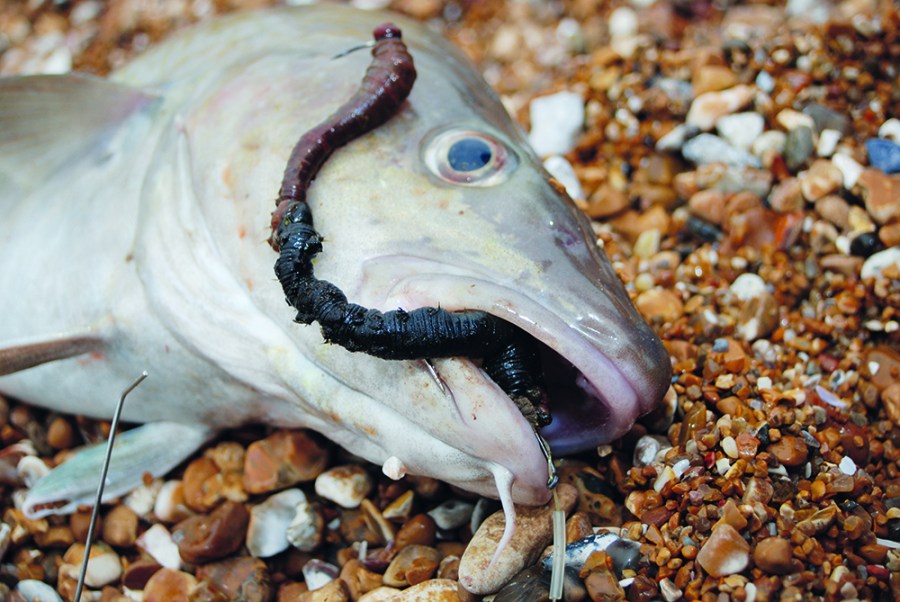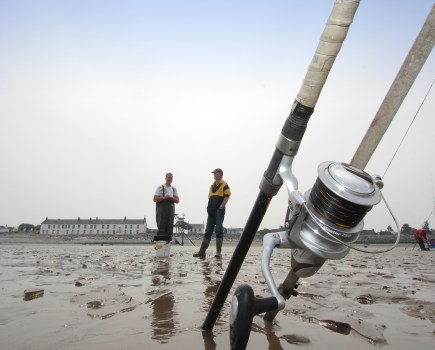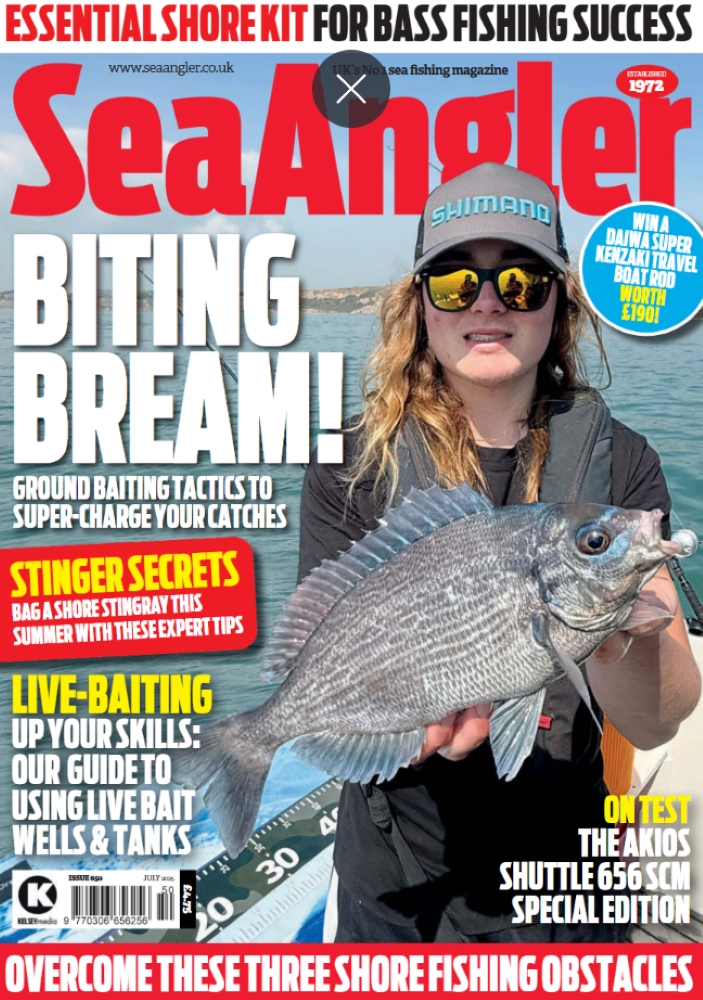Among sea anglers, one of the most commonly discussed topics is which bait you choose for a specific species or which choice is most effective to spread your bets. My advice is always to do your research and try to understand what your target species are feeding on in a specific area, at the time of year you are targeting them.
For example, you may find mackerel is the most effective bait in early summer for conger or huss on the Dorset coast, but by October, when the sea is thick with squid, the latter will be by far the most effective bait. In my opinion, this is simply because when the fish are feeding, they get a taste for something and hone their skills on finding that particular prey, simply because it’s the most accessible and effective to hunt at that particular time.
Bass gorge on slipper limpet after storms on the south coast but their percentage chances of finding slipper limpet before a storm after a long period of calm would be almost zero. The fish are just like us anglers when it comes to hunting; they like to maximise their chances of finding a decent meal without wasting time or energy. A good example of this is sharks and other species hanging around commercial quays where fish entrails are dumped on a daily basis. They can sit in waiting for a regular meal each day. To be effective sea anglers, we must learn to think like the fish we target.
So, what are the best baits that fish species are tuned into and will therefore give you the best possible chance of catching fish on a regular basis? Here are ten of the most reliable for upping your baits to bites ratio.
1) Ragworm
 Wriggly ragworm is a go-to bait if you want to ensure catching something
Wriggly ragworm is a go-to bait if you want to ensure catching something
If you’re an angler who has limited time to go fishing and the most important thing to you is catching anything, or if you want to take the kids fishing and want to maximise their chances of seeing a fish, ragworm is your best bet at many venues in the UK, particularly those with a mix of sand and rock. The worm also presents very well on smaller hooks and provides a bit of movement, as well as a stinky scent trail. It also is aerodynamic in the cast, which helps with distance casting.
Species: Plaice, sole, flounder, bass, pouting, poor cod, smoothound, cod, whiting, coalfish, pollock, black bream, common eel, conger (small), gurnard and red mullet.
Top Tip: Use worm that is as fresh as possible; it will be livelier on the hook. Remember to change the wraps regularly that you keep your worm in while storing them; one dead worm will poison the rest. Always remove dead or dying worms.
2) Lugworm –
 A fat, juicy blow lug – scooby snacks for cod
A fat, juicy blow lug – scooby snacks for cod
Like ragworm, it casts well, what it lacks in movement it certainly makes up for in scent trail. Fresh lug are full of blood and bleed while out there on the hook. This provides and irresistible attraction to many species on sandy beaches. Most anglers would say that bass and cod are two of the UK’s most desirable species to catch from the shore and this is a bait that is very hard for either species to leave alone. Black lugworm, as opposed to blow luworm, which are more commonly found on sandy beaches and don’t freeze as well, are often gutted and used fresh or frozen. Black lug is a great bait to have in rolls of newspaper tucked in the freezer when you haven’t got time to dig or pump any yourself.
Species: Plaice, sole, flounder, bass, cod, black bream, pollock, coalfish, whiting, gurnard, red mullet, pouting, and poor cod.
Top Tip: Lugworm will be juicier when it is freshly dug but more prone to burst; this favours short casting for bass and other species. When lugworm dehydrates in your bait fridge, it shrinks and becomes a tougher proposition and better for longer casting for cod and plaice. It also seems to get smellier. Remember to change the wraps regularly that you keep your worm in whilst storing them; one dead worm will poison the rest. Always remove dead or dying worms.
3) Mackerel:
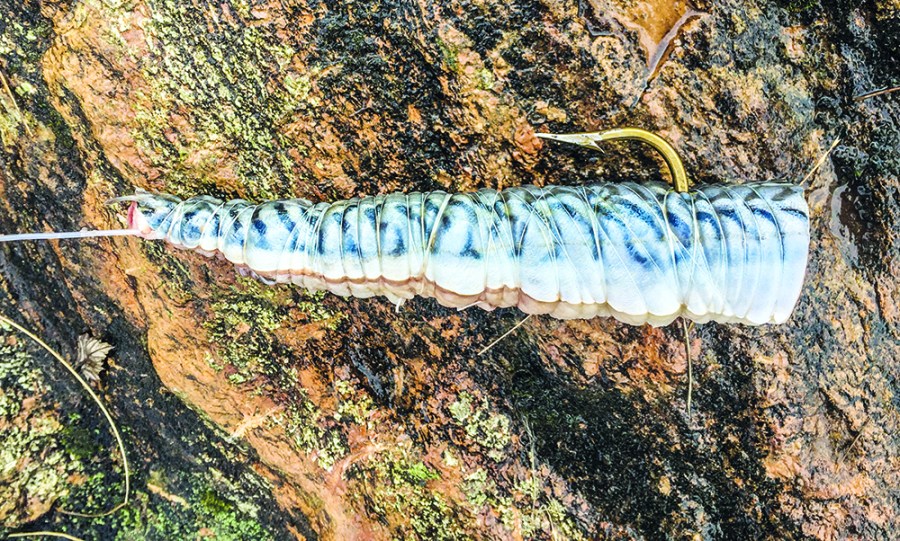 A perfect skate bait
A perfect skate bait
There are those that fish with strips of mackerel for lots of species very effectively, or use it as a tipping bait; I am not one of them. I absolutely love to fish for bass or conger with a mackerel head and guts; they are so effective. They work equally well on sand or rough ground. Uses sides or fillets of mackerel also make for an excellent bait for casting out targeting rays, huss or tope. I often use slices of mackerel to use in bait cocktails with sandeel or squid. This can provide a tremendous scent trail. You are spreading your bets with cocktails.
Species: Bass, blonde rays, undulate rays, small eyed rays, spotted rays, thornback rays, conger eels, bull huss, tope and ling.
Top Tip: Freshly caught mackerel will outfish frozen mackerel at a staggering rate. Use fresh whenever possible, it’s much rougher on the hook and harder for prey to pull off. Results show that fresh is far more attractive to the fish. However, don’t want to discourage you too much from using frozen, as it has accounted for plenty of my PB fish.
4) Squid:
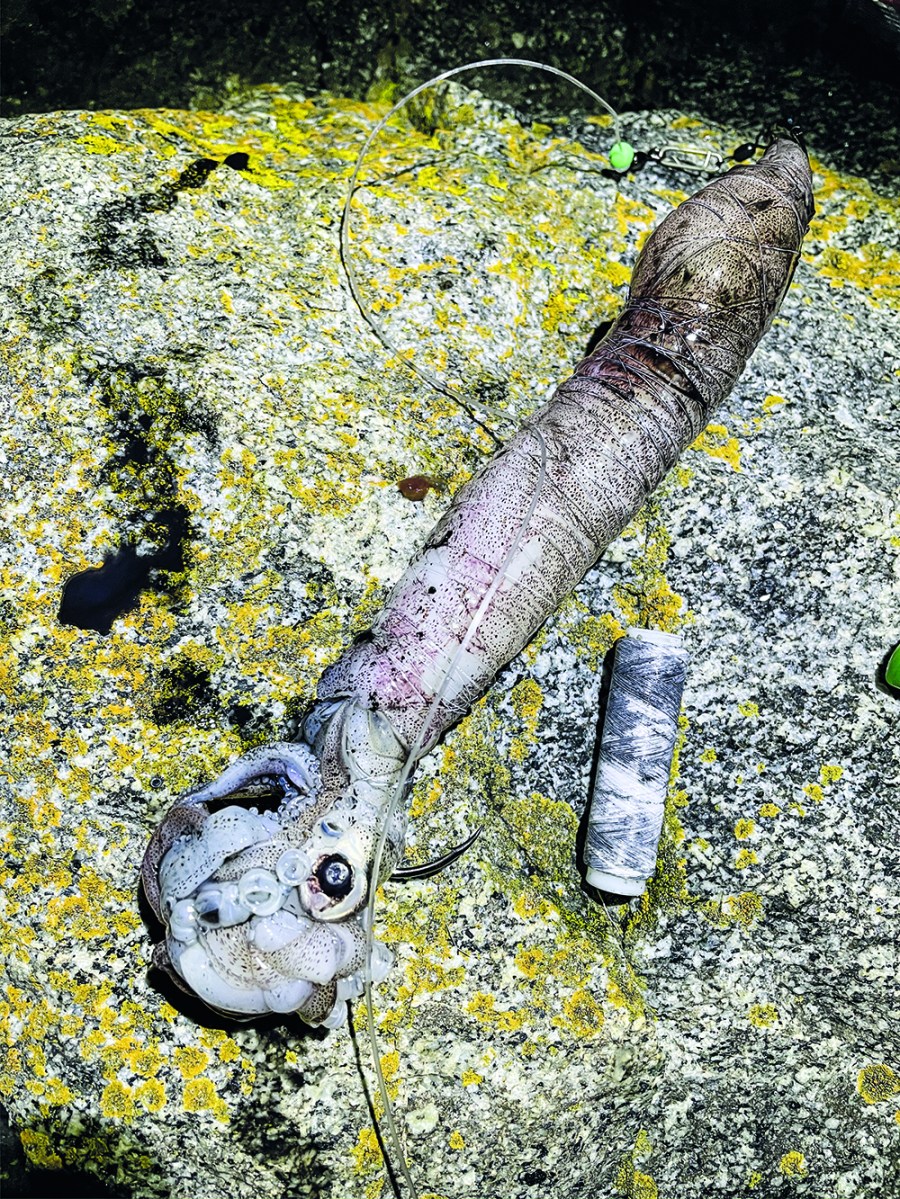 A whole squid whipped for casting
A whole squid whipped for casting
In my opinion, this is the one bait you should all have in your freezer. It’s so effective for many species, whether cast whole or used as a strip. It’s a big winner with cod, bass and rays. The beauty is its toughness and resilience to fish trying to tear it off your hooks. It’s my first-choice black bream bait. Freshly caught UK squid really comes into its own in autumn/winter as a bait, there are few baits, if any, that are more effective for certain species.
Species: Bass, cod, rays, hounds, huss, conger, bream.
Top Tip: The neat thing about squid, it can be re-frozen without losing much of its toughness, and plenty of fish will still take it. It also casts well with plenty of elastic used.
5) Sandeel:
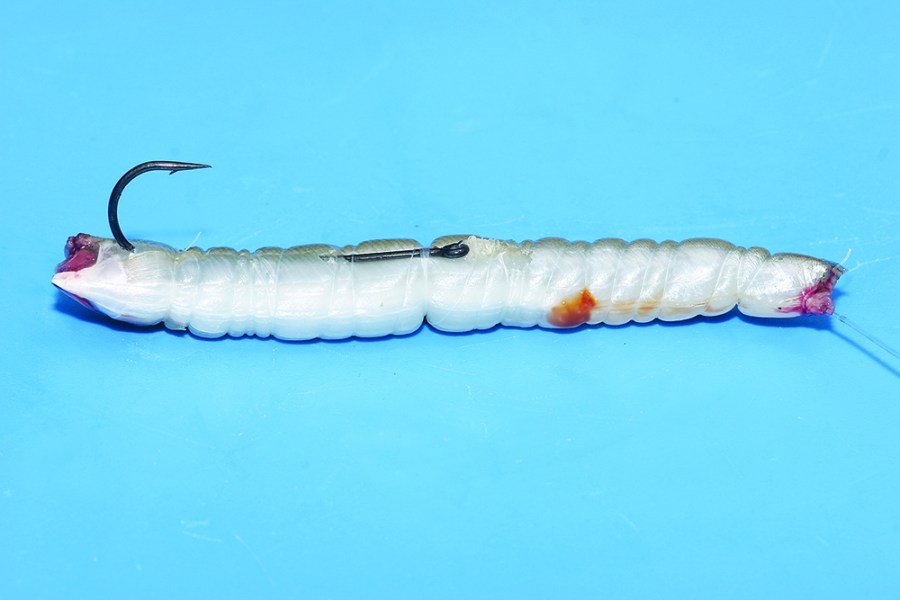 Sandeel baits are streamlined and removing the head and tail releases a delicious scent
Sandeel baits are streamlined and removing the head and tail releases a delicious scent
This is, in my opinion, the best fish bait for casting at long range and picking up rays over sandy ground throughout the spring, summer and autumn. Sandeel and launce are sniffed out by small eyed, undulate, thornback and blonde rays. Tope are also quite partial to a well-presented sandeel or launce bait. There are various species of launce and sandeel in UK waters, launce are typically a lot larger. They tend to give off a unique scent trail that the above species will go to great lengths to find. It’s a bait you should always have in your bait bag when fishing over sand. You can also use an aerator in a bucket and use live sandeels to catch bass; they make an irresistible bait.
Species: Rays, bass, turbot, brill, huss.
Top Tip: Clip of the head and end of the tail to let scent trail out at either end. Also, sandeel are best used frozen; experienced anglers will keep them in a thermos flask to keep them in optimum frozen condition during a session. They make a rigid, aerodynamic bait for casting to maximum ranges.
PIC [12. Rag or peeler is a great bait for wrasse]
PIC [13. A peeler prepared with body and legs ready for mounting on a hook]
6) Peeler Crab:
 A peeler prepared with body and legs ready for mounting on a hook
A peeler prepared with body and legs ready for mounting on a hook
This is a bait I barely use due to supply, but it’s incredible for smoothhounds and bass; many excellent anglers swear by it. It’s also a very pricey bait to buy live, which is by far the best time to use them as they are much less effective when frozen and thawed. Typically, because of the cost, anglers will use half a live crab; they have a unique aroma or scent when peeling. They work to good effect when used in a cocktail with worms also.
Species: Primarily bass, hounds, founder and wrasse, but they can also be deployed for cod, and rays will take it too.
Top Tip: They’re an expensive bait; use plenty of fine elastic to hold it in place, as you don’t want a fish pulling it off easily.
While writing this, I was conscious that we have so many exceptional baits, and I thought I would mention a few of my other favourites.
7 Chunks of herring make a great ray bait when in seasonPG]
Herring in early winter, when they are inshore being netted, is a tremendous bait for rays. This can be sourced fresh from local fish wholesalers or fishmongers. It freezes well too. It’s exceedingly oily and has a decent texture for casting.
- Bluey
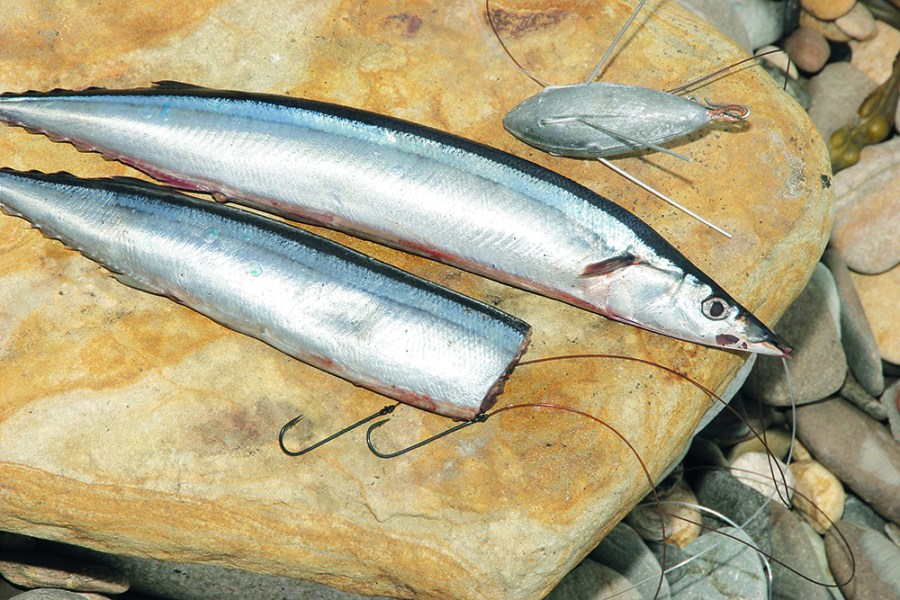 Bluey are oily and great for rays and huss
Bluey are oily and great for rays and huss
Blueys (Pacific Saury) are a favourite of many competent anglers in the UK. The obvious benefits are its silvery presentation, oily flesh and narrow shape for longer casting.
I also like live baiting, either with scad or coalfish, which you can put out on a slider for 6 hours and experience some fabulous results in settled conditions. A distressed fish that is endemic to the area will out fish most dead baits for species like bass, cod, tope, and ling. Scad and coalies will stay alive throughout a session; whereas species like pollock, mackerel and pouting will often die within 30 mins or so.
- Cuttlefish

Cuttlefish are tough and release a inky mucus which attracts fish. It is tough in texture; like squid it can also be refrozen. There are few baits that conger eels like more and I would put this down to their very inky mucous. It makes your hands a total mess, but, it’s well worth persevering with.
- Prawns
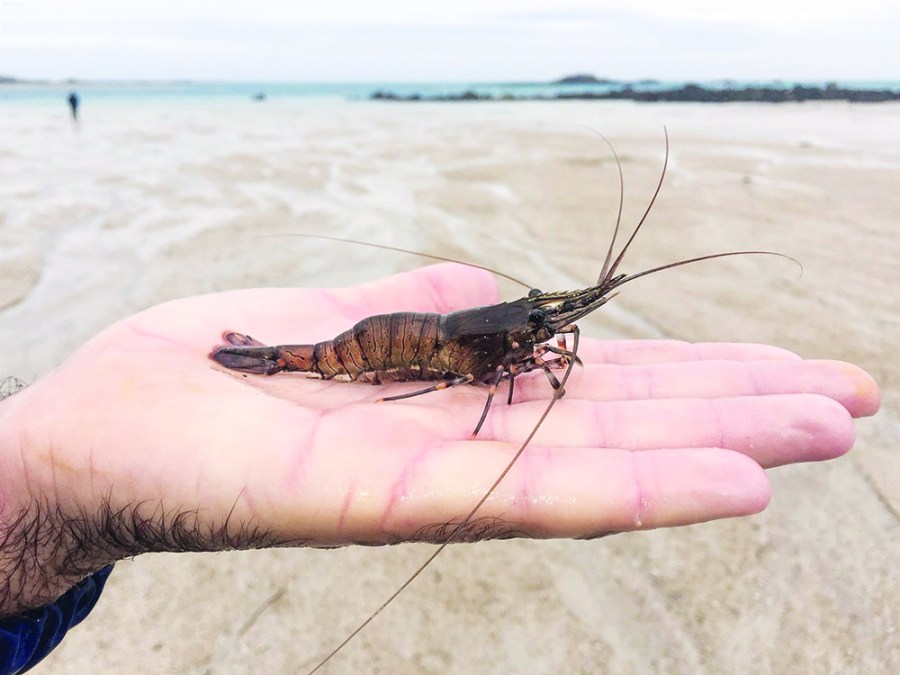 Both live and dead — may be the most underrated, and underused bait by anglers
Both live and dead — may be the most underrated, and underused bait by anglers
I could easily be mentioning other baits which really have their moments: razorfish, prawns, gaper clams, octopus, hardback crabs, garfish, hermit crabs, or cart. But ultimately you should always try to use what the fish you are targeting are feeding on locally, that’s really the best advice I can give. I can’t emphasise enough the importance of sourcing the freshest, best-conditioned bait possible. Good luck!

